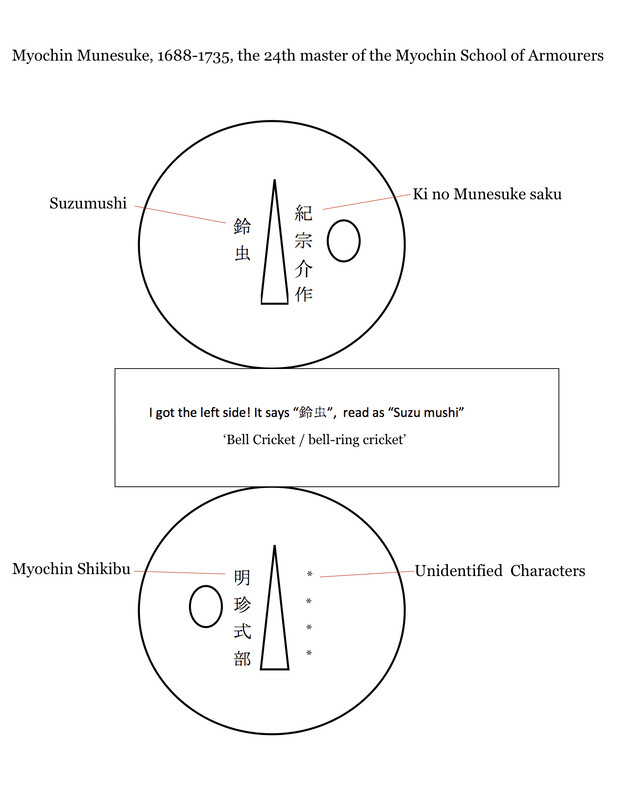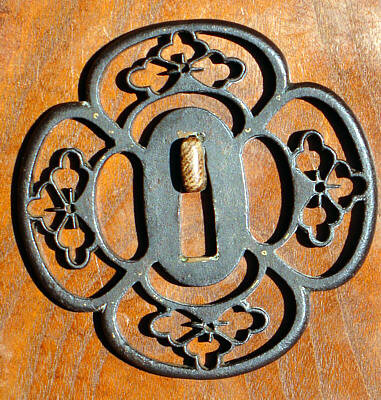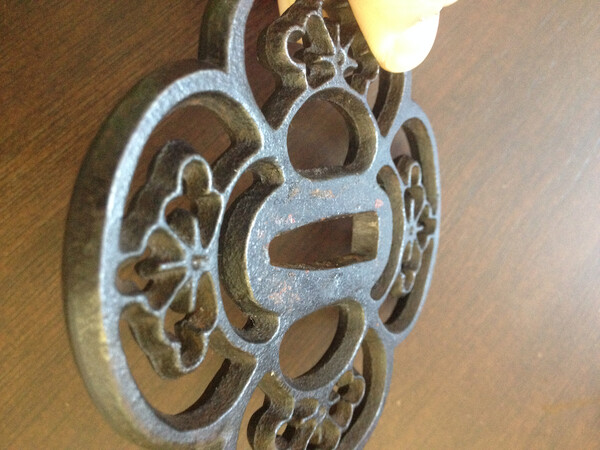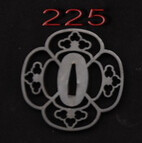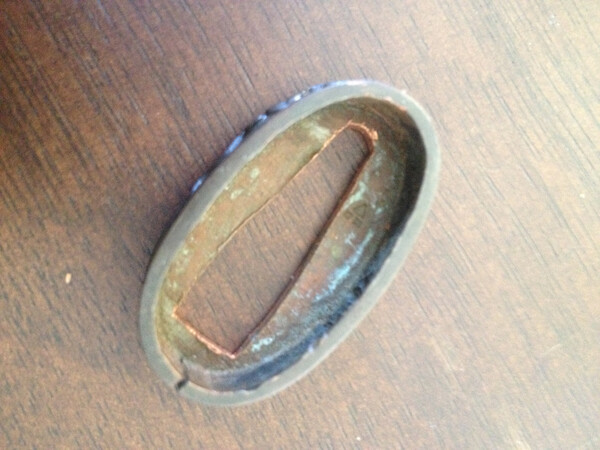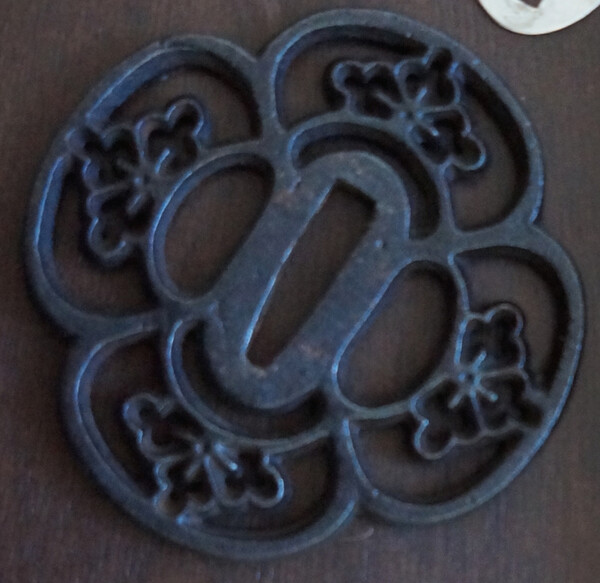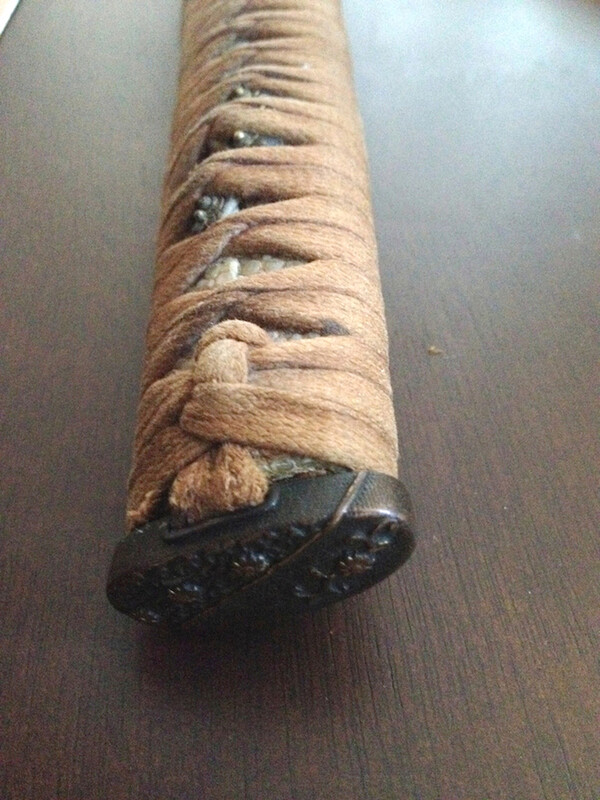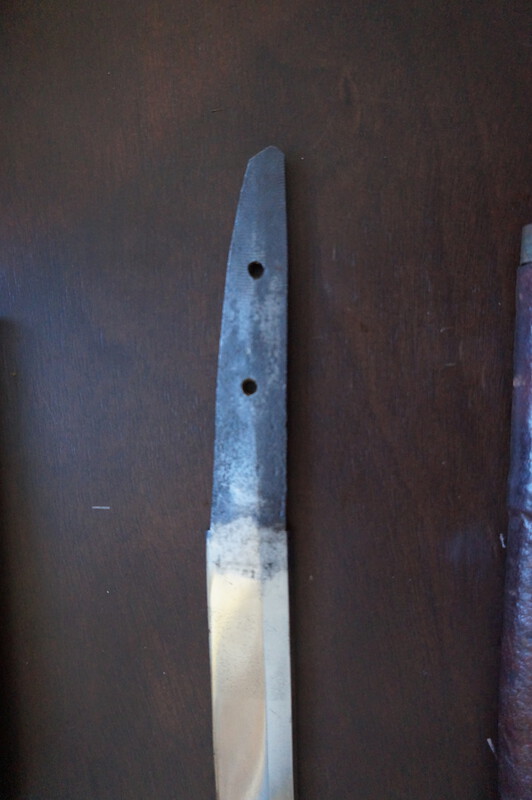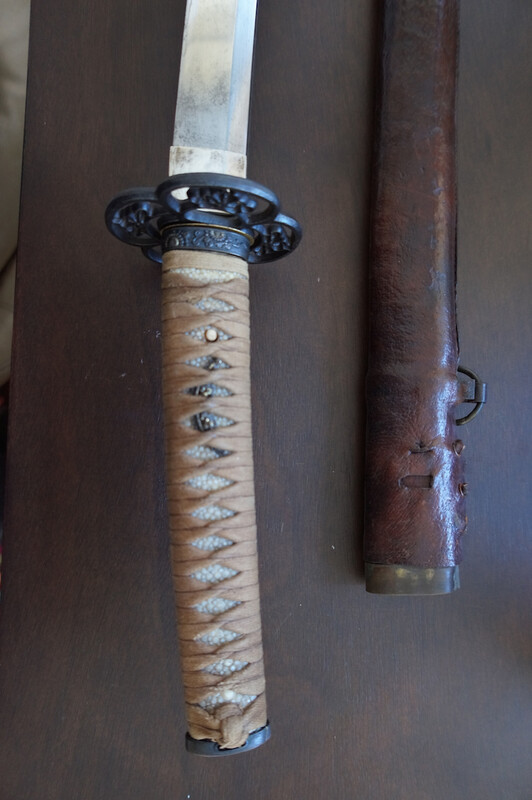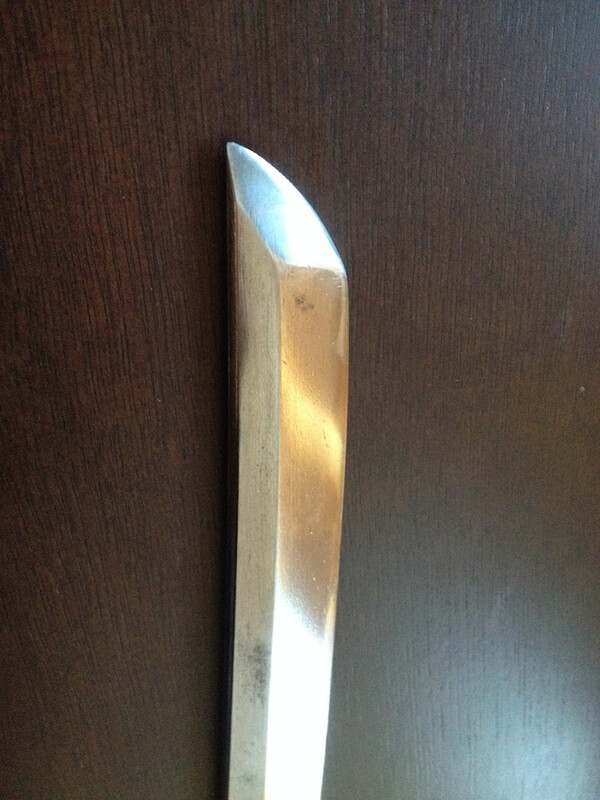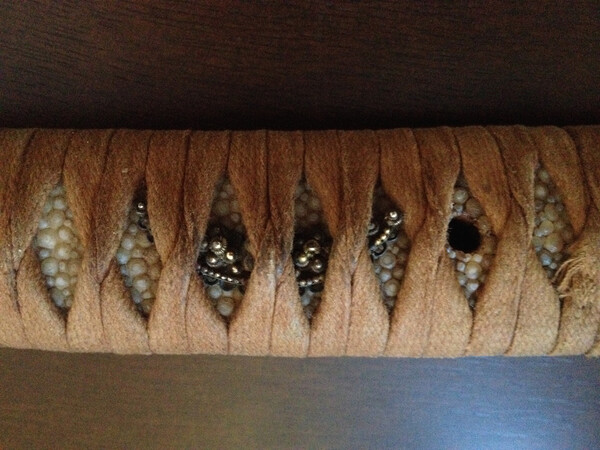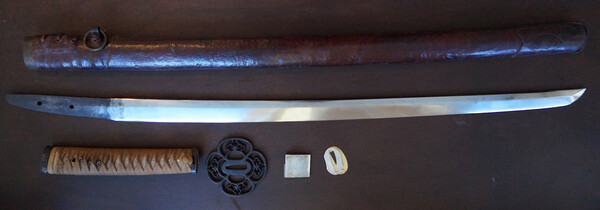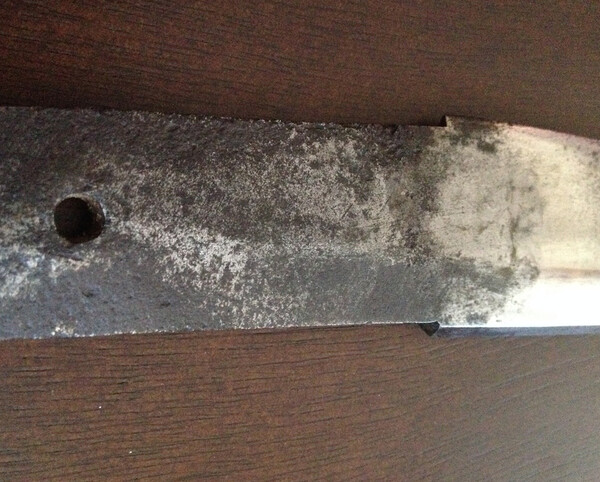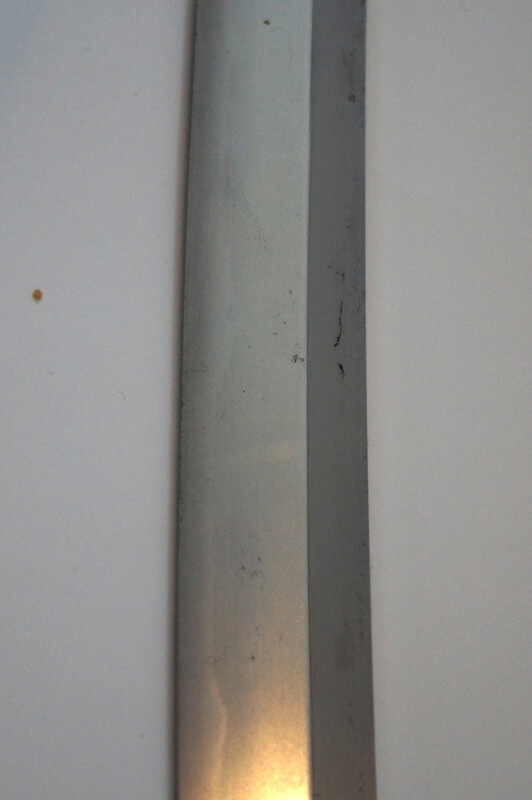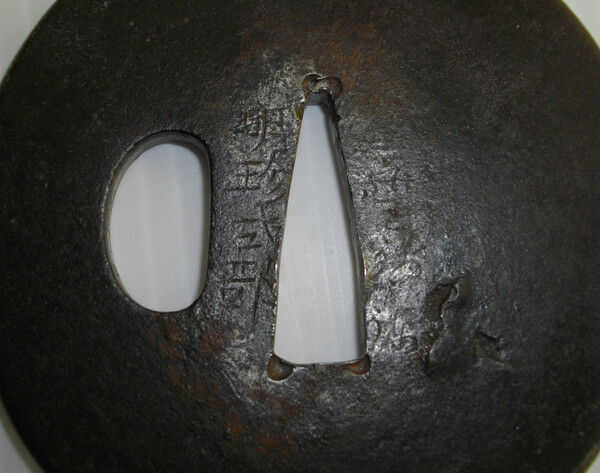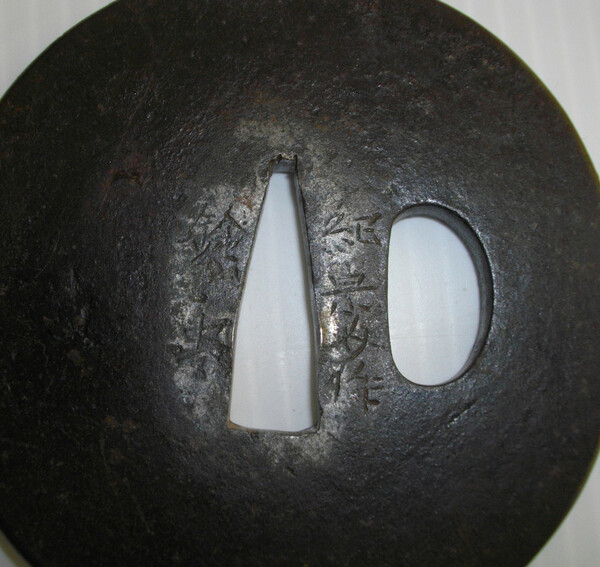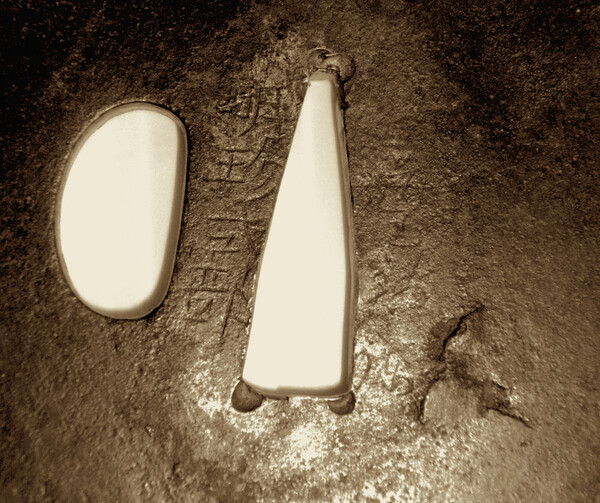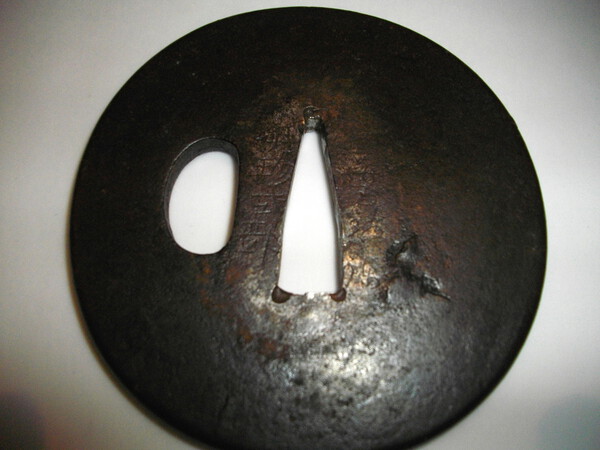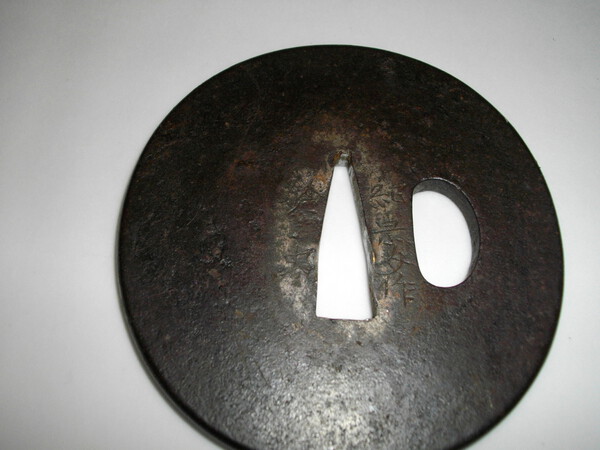
felros
Members-
Posts
22 -
Joined
-
Last visited
felros's Achievements
-
Thanks for all the help , Researching Myochin was interesting. As close as I'll get to translating this one I think, finding 'Suzumushi' was a nice bonus. (See attached diagram) Still one side with unidentified characters if anyone has any ideas? Regards, Craig
-
Can anyone help identify the mei ? Any other thoughts appreciated ? Regards, Craig
-
Thanks for the replies, Lee - I note there is some debate on here about cast iron tsuba, not wishing to further that debate, I am happy with whatever I have. I will note that I found original iron examples identified as (Kyo Shoami Mon sukashi tsuba from middle Edo) (see photo) they are identical in nature to mine except that mine is cast iron. I also found Chinese fakes that are cut steel, that are allot rougher than mine, and do not have the detail that mine does (see photo) I found no other examples of mine (being cast) The fuchi and kashira are genuine, no doubts - The Kashira definitely does not have those 'cast in place' shitodome. They slide in and out ‘as per normal’. Obviously I could not remove the ‘end cap’ to take photo’s (you’ll have to trust me on this one) I have attached a photo of the inside of the Fuchi, ‘which has a stamp of a triangle and two squares’ (see photo) Finally I have assembled the fittings onto an early Edo period wakizashi - which required little adjustment , I just had to lightly file the Fuchi, that was all. The tsuka was a perfect fit and looks right, which suggests to me that it was originally from a wakizashi and not a katana. Very happy with the result (see photo) The mekugi-ana in the nakago does not line up with the mekugi-ana in the tsuka by an inch, A job for later on down the track. Many thanks, Craig
-
Thanks for the replies, Some more photos, The fittings may end up on a wakizashi I have. Regards, Craig
-
Thanks, I believe the blade to be late Edo, I am not sure if it has been reshaped. It does look over polished or under polished, which one I am not sure. The fittings (Menuki) and (Fuchi Kashira) are genuine Edo period, unsure about the tsuba though it seems ok. The tsuka looks to small, and does not seem to be the original for the blade as there is only one hole in it and two holes in the nakago. I am not sure about the saya , though I have seen them before on ww2 swords. The sword also came with a surrender tag and an officers sword knot. Given all this , I believe it has been put together during ww2. Or after from various swords. regards, Craig
-
I understand this is an old family blade. It came with a ww2 field scabbard and surrender tag. The blade length is 77cm The cutting edge is 62.7cm There is some pitting on the nakago and some nice file marks. I can see the faintest of straight 'ish hamon, it looks like the blade has been over polished. The blade only has a slight curve , and the tsuka seems short for a katana. Any thoughts ? Regards, Craig
-
Are these both Gifu Stamps ? They are from a Pattern 44 Type 3 Shin Guntō - Signed Kanemune on one side - Dated February 1945 on the other side. There are no other arsenal stamps on the nakago. Regards, Craig
-
Thank you for the replies and information, your input is greatly appreciated. I am learning allot from researching this blade alone. I can put this one back on the shelf with a much clearer picture of its history. And a better knowledge base to study the next one, stay tuned. Regards, Craig
-
Trying to learn by oneself about Japanese swords is a difficult learning curve, I put forward the following observations, as a novice they may all be incorrect. In the hope of further narrowing down the blades maker/school and age. I observe the following - Blade shape - Shinogi Zukuri Blade appears to have a tori-zori (kyo-Yamashiro) - Sori(curve) Nagako - appears to be - Kuri in Shape Boshi Shape - Appears to be - Omaru Jigane - Appears to be Masame Hada with elements of mokume hada Hamon - Appears to be Notare with elements of Komidare Mune - Iori Any input greatly appreciated, Regards, Craig
-
-
Recently acquired this one, I think it is Edo period. Has a nice feel/balance, edge still sharp , no nicks. Uninterrupted hamon. Shows some nice grain , One small Fukure approximately 4mm. Several Ware. Blade length 67cm Cutting edge 52.5 cm Width at munemachi 5mm Any thoughts ? Regards, Craig
-
Myōchin Shikibu Ki no Munesuke , Thank you, Any Ideas which one ? Regards, Craig
-
Thanks for the replies. Here a few better shots, any thoughts ? Will post some pics of the Katana in Handachi Koshirae later for further discussion. Regards, Craig
-
Can anyone please assist me with the translation of this tsuba ? It is from a Koto period katana attributed to Kanekuni. Just wondering if the tsuba is of the same period or a later addition. Thanks, Craig

